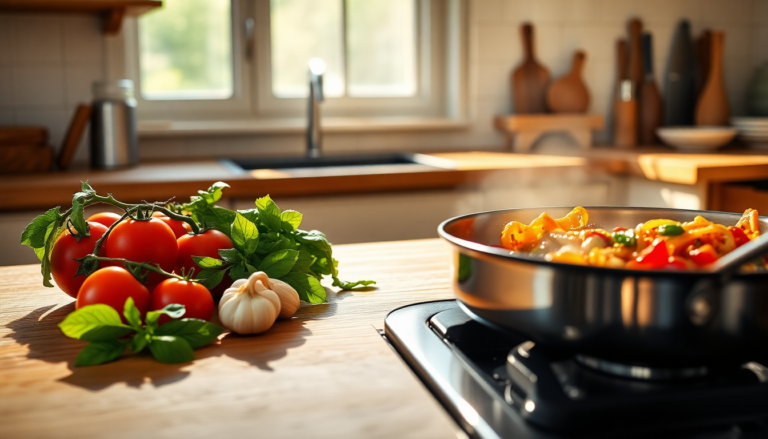Argomenti trattati
Imagine standing in a sunlit kitchen, where the air is filled with the irresistible aroma of sautéing garlic and fresh herbs. Here, each ingredient isn’t just a recipe component; it’s a vibrant note in a symphony of flavors, waiting to be discovered. Cooking isn’t merely about sustenance; it’s an art form that weaves together time, culture, and personal experience. Behind every dish, there’s a story just waiting to be unveiled with each delightful bite.
What’s the Story Behind Your Ingredients?
Every ingredient tells a tale, reflecting its origins and the land it comes from—this is what we call terroir. Take, for instance, the humble tomato, a staple in countless cuisines around the world. Its journey begins in Italy’s sun-drenched fields, where it soaks up the warmth of the earth and the essence of the region. As it ripens, it develops a rich umami flavor, perfect for the sauces that are the heart of Italian cooking. Isn’t it fascinating how something so simple can have such a profound story?
As someone who once stood behind the stove as a chef, I’ve learned that the best dishes are those that truly honor their ingredients. When you pick a tomato at its peak, you’re not just selecting an ingredient; you’re choosing a flavor that embodies a season, a place, and a unique narrative. This connection to our ingredients is key in fostering a sustainable approach to cooking—supporting local farmers and understanding the impact of our choices on the environment.
Demystifying Culinary Techniques
Have you ever felt intimidated by culinary techniques? Take fermentation, for example. It might sound complex, but it’s actually a simple process that transforms flavors while enhancing nutritional value. When you ferment vegetables, you allow beneficial bacteria to flourish, creating a tangy, complex flavor profile that can elevate any dish. Isn’t that something worth exploring?
To get started, why not try making your own sauerkraut? All you need are finely shredded cabbage, a sprinkle of salt, and a bit of patience. As the cabbage ferments, its natural sugars convert into lactic acid, giving it that signature crunch and tang. This straightforward technique not only preserves the cabbage but introduces an exciting umami element to your meals. Just imagine: the flavors of your homemade sauerkraut will not only enliven your palate but also connect you to the age-old traditions of food preservation.
Connecting to Tradition and Sustainability
The essence of cooking lies deeply rooted in its traditions. Each region boasts its own culinary heritage, shaped by available ingredients and cultural influences mingling over the years. Embracing these traditions allows us to appreciate the rich tapestry of gastronomy. For example, the Mediterranean diet, celebrated for its health benefits, thrives on fresh, local produce, seafood, and healthy fats. Have you ever considered how these choices can impact your health and the environment?
As we delve into these culinary traditions, we uncover the importance of sustainability. Opting for ingredients from local markets not only supports your community but also significantly reduces the carbon footprint associated with transporting food over long distances. By respecting the land and its produce, we can foster a harmonious relationship with nature, just as generations before us have done.
Join Me on a Culinary Adventure
As we wrap up, I invite you to embark on your own culinary journey. Take the time to explore local markets, learn about the origins of your ingredients, and experiment with techniques that excite your senses. The kitchen is your canvas—paint it with flavors and stories that resonate with you. Remember, cooking is not just about feeding the body; it’s about nourishing the soul and celebrating the connections we share with food and with each other. So, what’s your next culinary adventure going to be?

